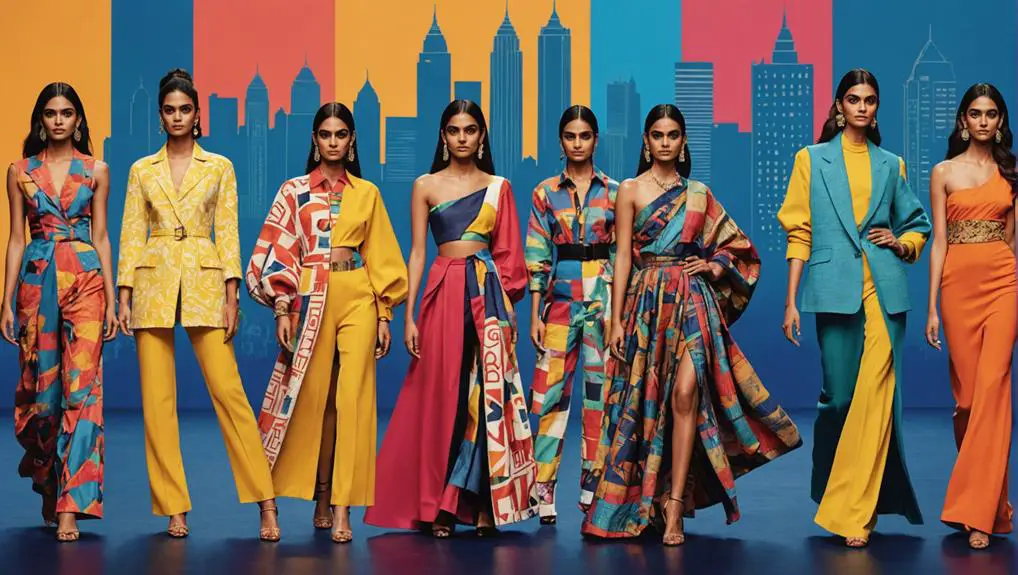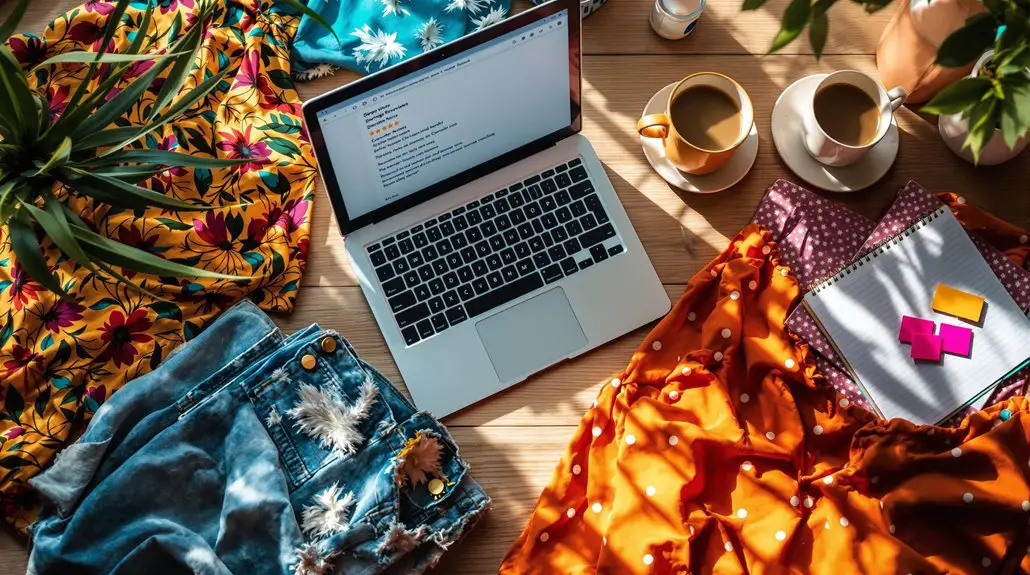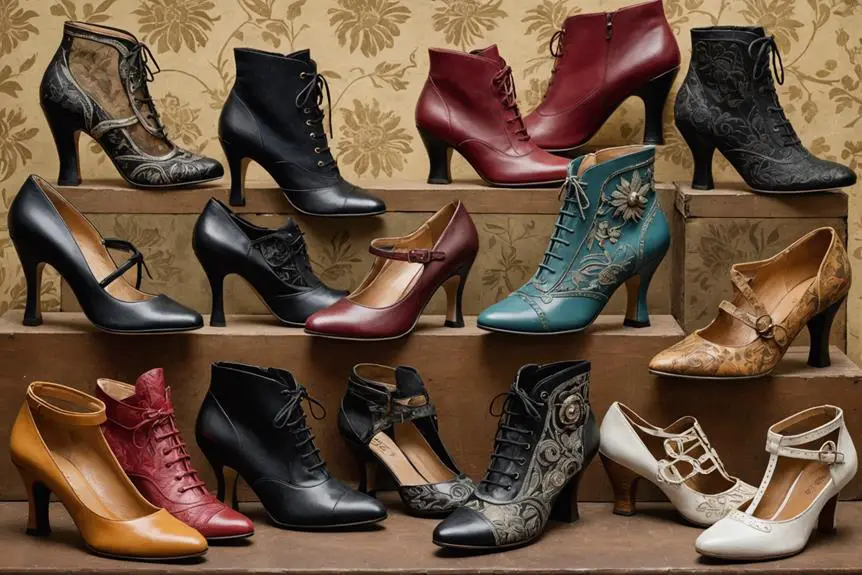The vibrant tapestry of Mumbai's fashion scene symbolizes a city in constant evolution, where each thread represents innovation and tradition. You might wonder how this annual showcase has transformed from a modest beginning into a pivotal event that captures global attention. As you explore the journey of Mumbai Fashion Week, consider the impact it's had on both emerging designers and established names. What forces have shaped its trajectory over the years, and how has it influenced the broader Indian fashion landscape? The answers might surprise you.
Origins of Fashion Week in India
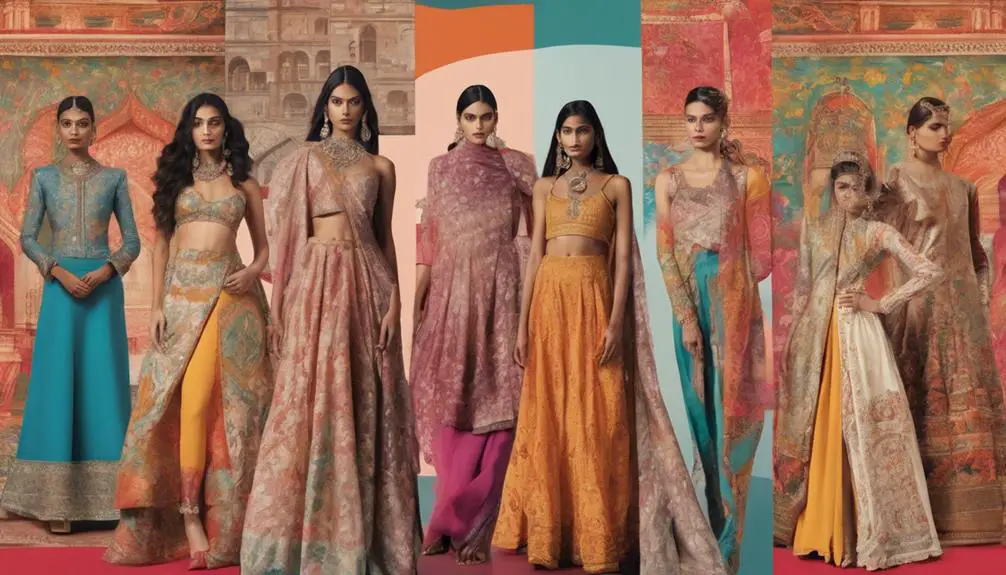
The origins of fashion week in India began with the launch of the Lakmé India Fashion Week (LIFW) in August 2000. Imagine this: 33 pioneering designers showcasing their incredible creations at the Taj Palace Hotel in New Delhi. Doesn't that sound exciting? This event was more than just a runway show; it was a bold statement about the future of Indian fashion.
Conceptualized by the Fashion Design Council of India (FDCI) and IMG, with Lakmé stepping in as the title sponsor, LIFW marked a huge milestone. It was all about prêt-à-porter collections, steering clear of bridal and couture fashion. Why? They wanted to set a distinct tone that focused on ready-to-wear styles, making fashion accessible and fun!
This first LIFW ignited a spark that would light up the fashion scene. It wasn't just about clothes; it was about creating trends and setting the stage for the next generation of designers. Think about it: how many of those initial designs have inspired current fashion trends? Loads, right?
The buzz around LIFW proved that the Indian fashion industry was ready for something big. It showcased not just talent, but also the potential for growth. As you can see, this event laid the groundwork for future fashion weeks, showing just how vibrant and diverse Indian fashion could be. So, the next time you see a designer's collection, remember where it all began!
Transition to Mumbai
In 2005, a contract dispute sparked a significant shift in India's fashion landscape, leading to the change of Lakmé Fashion Week (LFW) to Mumbai. This move wasn't just about location; it was a game-changer! The inaugural LFW took place at the National Center For Performing Arts (NCPA) in 2006, and it set the stage for something spectacular. Can you imagine the buzz?
With this change, LFW welcomed a wave of creativity, featuring renowned designers like Manish Malhotra, Ashish Soni, and Sabyasachi Mukherjee. They brought their A-game, showcasing the vibrant fashion scene that Mumbai is famous for.
Here's what made this shift so special:
- Increased designer participation: LFW saw 115 designers strutting their stuff, up from just 61 the previous year in Delhi.
- Emerging talent: The Mumbai venue became a hotspot for both new and established designers, opening doors for fresh collaborations.
- Enhanced reputation: The move solidified Mumbai's standing as a fashion capital, attracting attention from across the globe.
This new chapter not only highlighted local talent but also sparked exciting designer collaborations, making fashion week a must-see event. So, whether you're a fashionista or just curious, you can't help but get caught up in the excitement of LFW's change to Mumbai. Isn't it amazing how a simple change in location can create such a vibrant atmosphere?
Growth and Expansion
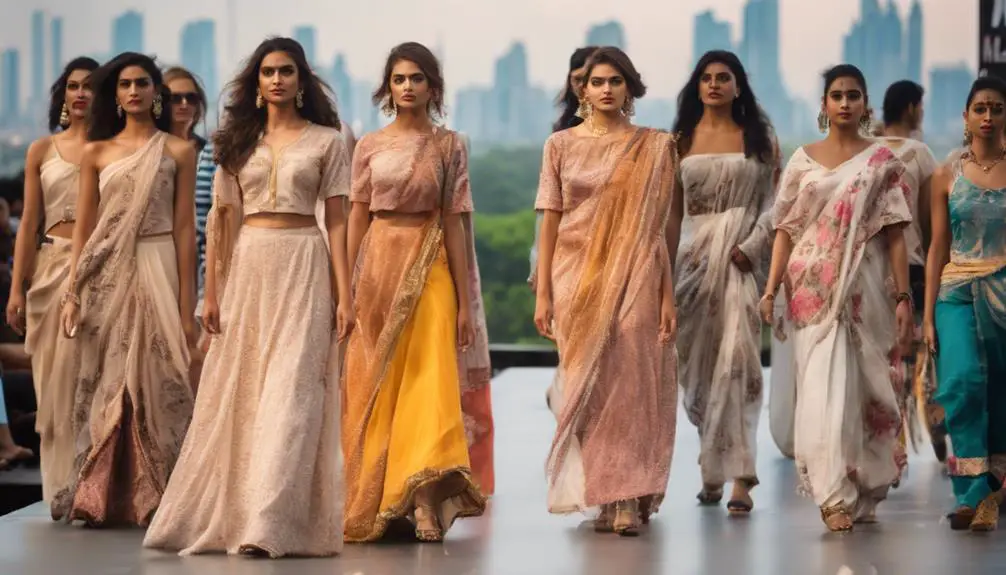
Lakmé Fashion Week's growth and expansion have transformed it into a pivotal event in India's fashion calendar. Can you believe it all started in 2006 with just 115 designers? Since then, it's skyrocketed! With initiatives like Gen Next and Emerging Designer categories, LFW has opened doors for fresh talent, making it a vibrant melting pot of creativity.
As the years rolled on, LFW attracted big names like Manish Malhotra and Sabyasachi Mukherjee. Their participation only boosted the event's prestige. It's like rubbing shoulders with the fashion elite, right? Plus, the media coverage is off the charts, which means designers and brands get a spotlight that's hard to ignore.
But here's where it gets even cooler: Lakmé has embraced sustainable fashion, adapting to what today's audience wants. You'll find designers showcasing eco-friendly collections that look fabulous while being kind to the planet. That's something to cheer about!
Also, the digital presence of LFW has taken it to new heights. With live streams and social media buzz, you can experience the magic from anywhere. Who wouldn't want to catch the latest trends with just a click?
Impact on Indian Fashion
Mumbai Fashion Week has had a profound impact on the Indian fashion landscape since its inception. Can you imagine a fashion event that not only showcases stunning designs but also promotes new talent? That's precisely what Mumbai Fashion Week does! With over 115 designers strutting their stuff, it's become a key player in putting Indian fashion on the global map.
Here's what makes it so special:
- Emerging Talent: Programs like Gen Next spotlight fresh designers, giving them a chance to shine.
- Cultural Influences: The fashion seen here often draws inspiration from India's rich heritage, merging traditional elements with modern flair.
- Sustainable Practices: More designers are prioritizing eco-friendly methods, ensuring that fashion doesn't come at the cost of our planet.
The event's collaboration with the Fashion Design Council of India (FDCI) has been a game changer, driving creativity and innovation. Plus, the presence of high-profile film stars and international models adds that extra sparkle, making Indian fashion not just accepted but celebrated!
You might wonder, how does all this affect you? Well, it means you get to wear clothes that are not just stylish but also rooted in culture and sustainability. With every show, the world gets a little closer to appreciating the diverse tapestry of Indian fashion. So, next time you rock that vibrant outfit, remember, you're part of a movement that's making waves!
Key Designers and Innovations
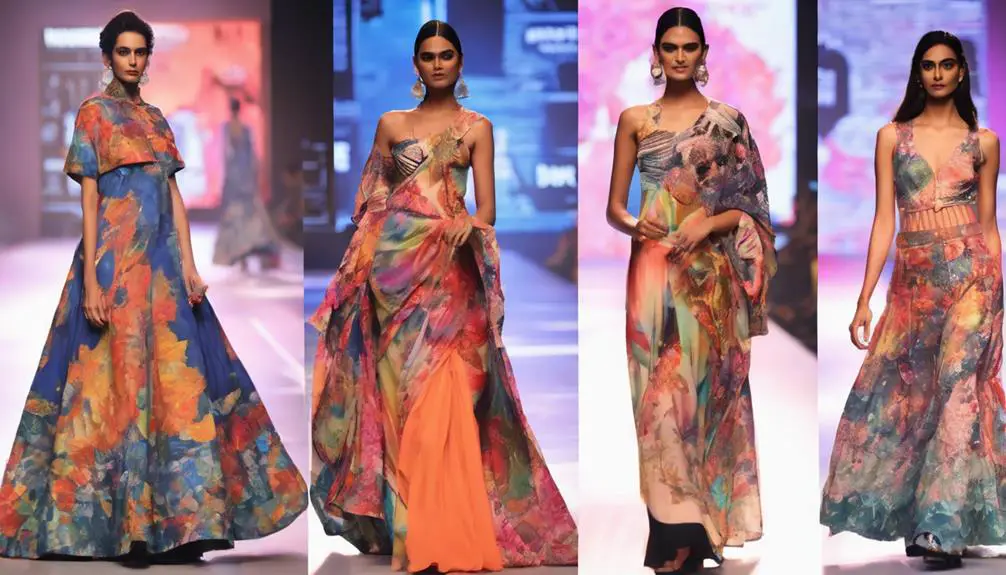
Fashion enthusiasts flock to Mumbai Fashion Week, where key designers reveal groundbreaking innovations that shape the industry. You can't help but get excited when you see the amazing designer showcases from legends like Manish Malhotra, Sabyasachi Mukherjee, and Tarun Tahiliani. They've taken the spotlight, presenting innovative collections that blend tradition with modern flair, making waves not just in India, but around the globe.
Remember when Sabyasachi first caught everyone's eye? His unique approach to mixing traditional Indian textiles with contemporary styles has set trends that many still follow today. Plus, let's not forget the Gen Next and Emerging Designer categories, launched in 2006. They've opened doors for fresh talent like Rahul Mishra and Swapnil Shinde, giving them the recognition they deserve.
The event doesn't stop there! It keeps evolving, featuring some jaw-dropping presentations and collaborations. You might even spot international supermodels like Naomi Campbell strutting down the runway—how cool is that? And if you're into sustainability, you'll love how Mumbai Fashion Week showcases designers who focus on eco-friendly materials and ethical production methods. It's all about staying trendy while caring for our planet!
Frequently Asked Questions
How Can Emerging Designers Participate in Mumbai Fashion Week?
To participate in Mumbai Fashion Week, emerging talents should apply for designer showcases, network with industry professionals, and submit their innovative collections. Engaging with the fashion community can elevate your visibility and open new opportunities.
What Sustainability Initiatives Are Implemented During the Event?
During the event, you'll notice designers using sustainable materials and showcasing eco-friendly practices. They prioritize recycling, reduce waste, and promote ethical production, ensuring the fashion industry moves towards a more sustainable future while inspiring others.
Are There Any Specific Themes for Each Mumbai Fashion Week?
Yes, each Mumbai Fashion Week showcases specific themes that reflect current fashion trends and diverse design inspirations. You'll notice how designers interpret these themes, creating unique collections that capture the essence of contemporary style and culture.
How Does Mumbai Fashion Week Support Local Artisans?
Mumbai Fashion Week showcases artisan collaborations, highlighting local talent. You'll see designers using traditional techniques, preserving cultural heritage while promoting unique craftsmanship. This support not only empowers artisans but also enriches the fashion landscape you experience.
What Are the Ticketing Options for Attendees?
You'll find various ticketing options for attendees, including VIP Passes for exclusive access, Early Bird Discounts for early purchases, Group Packages for friends, and Student Rates that make it affordable for aspiring designers to attend.
